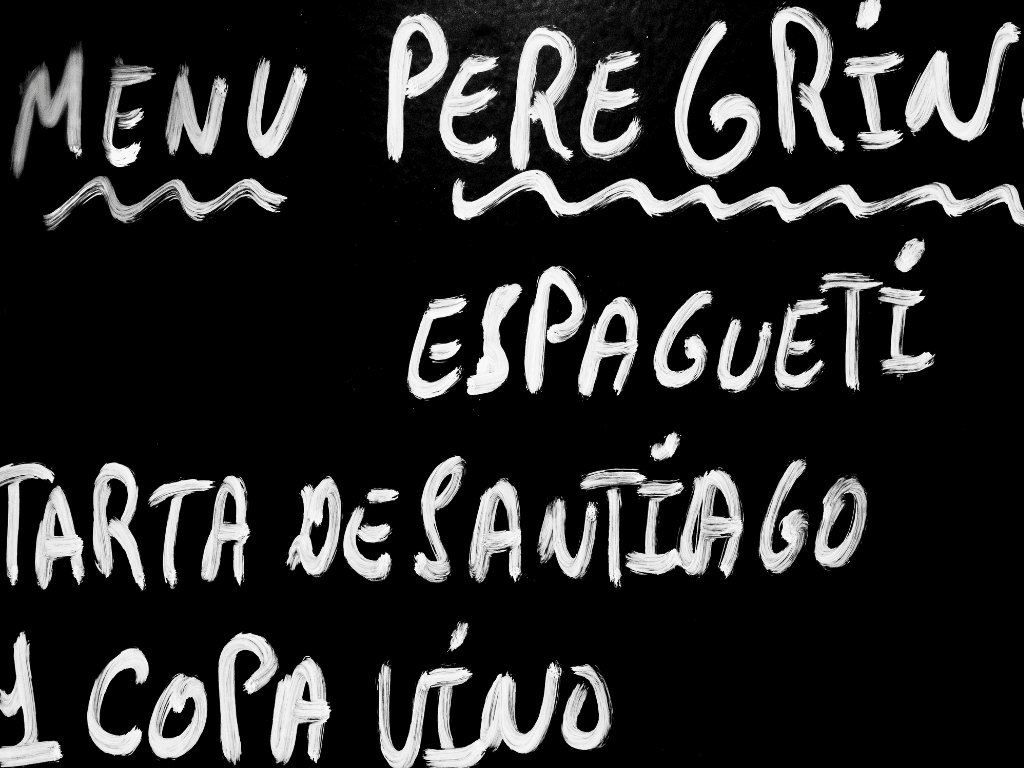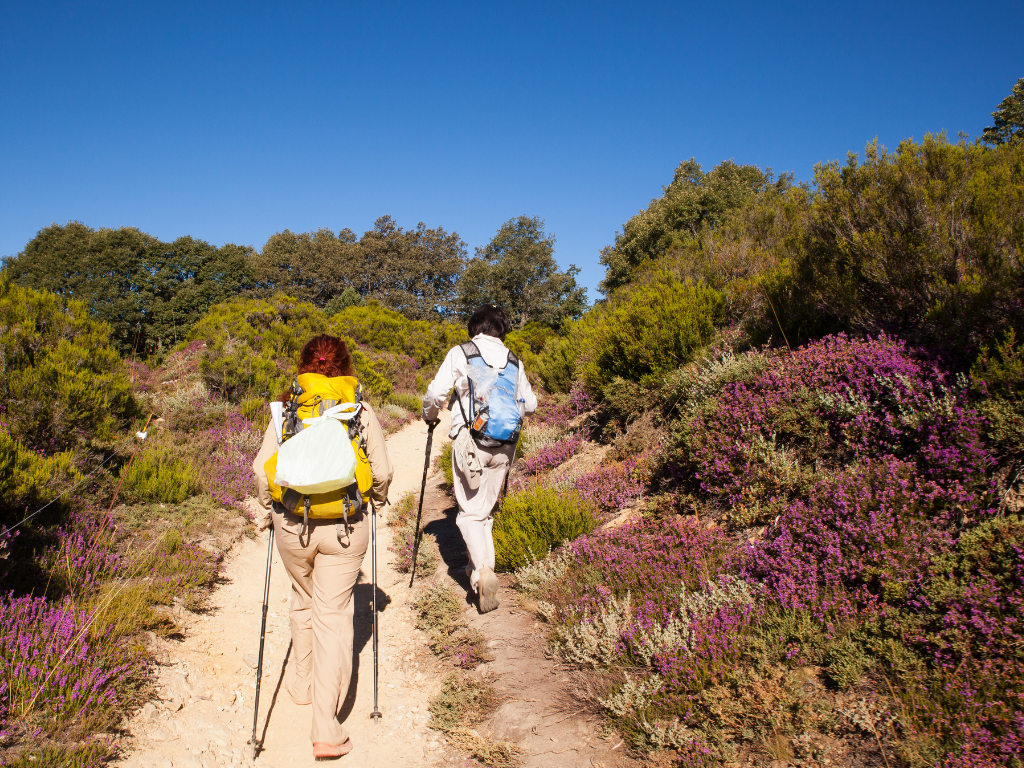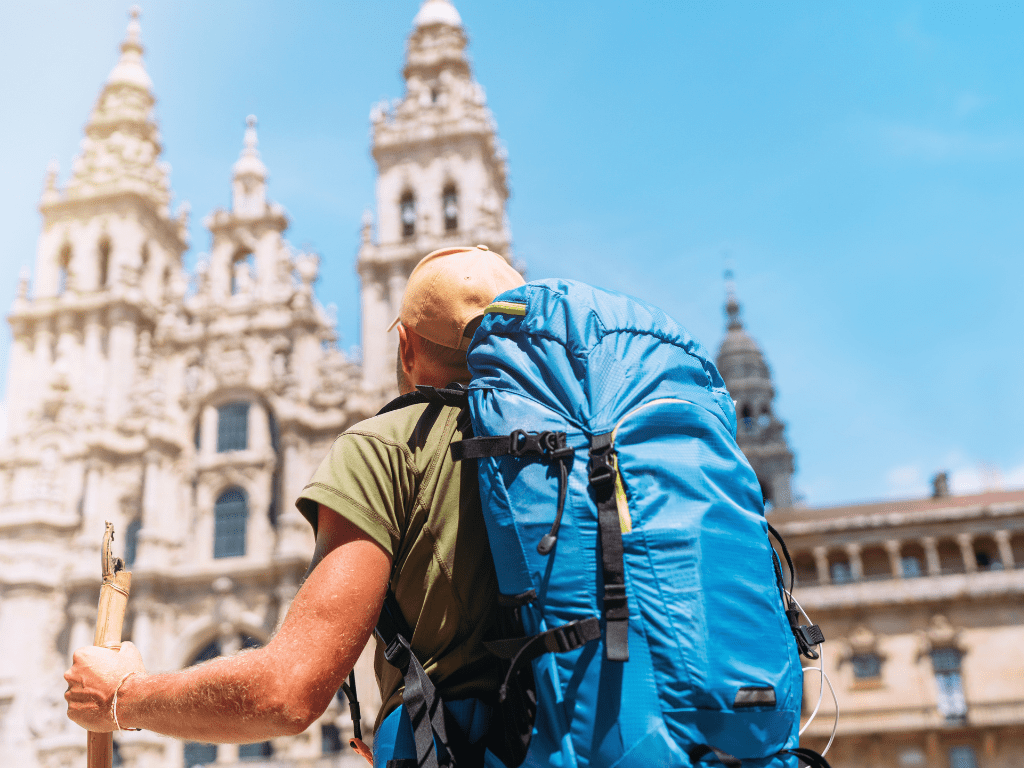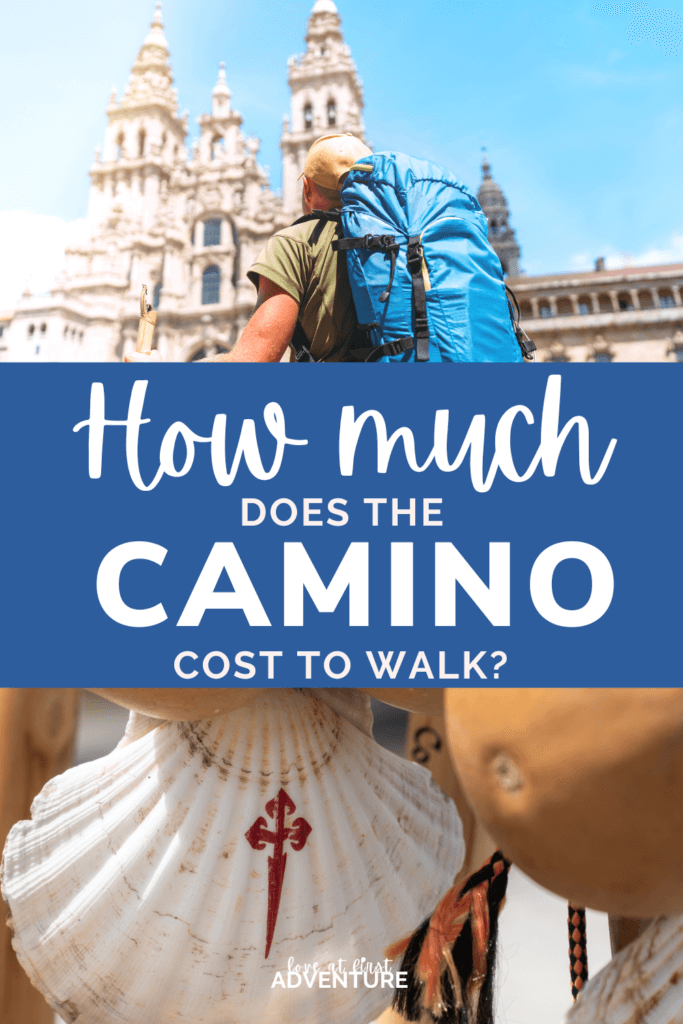How Much Does it Cost to Walk the Camino de Santiago?
Disclaimer: This article may contain affiliate links. For full information, please see our disclaimer here.
How much does the Camino de Santiago cost? It’s more affordable than you might think! Read this guide to budgeting for the Camino to find out more.
So you’re thinking about backpacking the Camino de Santiago? Amazing! But the big questions that are on everyone’s mind are, “How much does the Camino de Santiago cost?” and “How much should I budget for the Camino?”
I’ve walked the Camino de Santiago route and took a mid-level budget approach, and I learned ways to save money and learned about fun splurges, too. With my first-hand experience, I’m going to break down how much walking the Camino de Santiago in Spain costs.
The good news is that the Camino can be done on any budget. Afterall, the pilgrimage invites everyone to come experience the spirit of the Camino!
Thus, the governing authorities work to keep costs low at their public facilities. There are also many religious organizations that operate along the Camino and offer cheap lodging. Again, they just want people to enjoy the experience and not have money be an obstacle.
That being said, you can walk it with anything from a shoestring Camino budget to a big fat wallet! It all depends on your personal preferences and comfort level. So, let’s get started outlining the Camino de Santiago cost.
How much does it cost to do the Camino de Santiago?
On average, the cost to walk the Camino de Santiago is about $42 (€40) per person, per day. This is in addition to airfare to and from Europe and assumes you stay in albergues and eat in restaurants geared towards pilgrims. Plus, you may want to splurge on entrance fees or other upgrades now and then. (We’ll talk more about other expenses to conder, below)
Depending on your comfort level, you could expect to spend between $32-$84 (€30-€80) per person, per day.
All-in, you should expect to spend the bulk of your daily budget on:
- Accommodation
- Food & Drinks
- Essentials like first aid and laundry
Of course, you can lower your average daily cost even more by staying in public or donativo albergues and cooking your own meals.
If you prefer private rooms, plan to eat out in nicer restaurants, splurge on massages, and transport your pack, you should budget more like $53-$84 (€50-80) per day.
The cost of accommodation on the Camino de Santiago

Accommodation costs along the Camino vary depending on the type of accommodation as well as the city and amenities along each of the Camino routes. It’s definitely possible to find inexpensive places to stay in almost every stage of the Camino de Santiago, though (especially on the Camino Francés).
Let’s break down the expected costs of some of the most popular accommodation options:
- Not-for-Profit Albergues — $5-$9 (€5-8) per bed in a dormitory
- Private Albergues — $11-$18 (€10-17) per bed in a dormitory
- Pensions — $27-$48 (€25-45) for a single room
- Hotels — $32-$85 (€50-80) for a double room
Read more about your booking options on our guide to accommodation on the Camino de Santiago. Also, I highly recommend Booking.com to book your stays! It’s my favorite booking engine and served me well on the Camino!
The cost of food on the Camino

When traveling a full Camino, food is truly the area where you have the least control over your budget simply because you are limited to whatever is available at each stop. But, don’t worry — food is very affordable on the Camino!
Overall, I’d suggest you budget between $20 (€19) a day for food on the Camino.
This assumes you stop for a coffee (or two, or three!) and snacks throughout the day and eat a hearty pilgrim’s meal in a restaurant.
Here’s quick breakdown of typical food costs on the Camino:
- Breakfast — $3-$4 (€3-€4) for coffee/tea, juice, and toast or pastry.
- Lunch — $3-$4 (€3-€4) for a soda or coffee and a Spanish omelet or sandwich.
- Dinner — $11-$16 (€10-€15) for a 3-course pilgrim’s menu (menu del peregrino) with wine.
- Water — tap water is free and widely available
If you want to spend less, you can opt to cook your own meals in the albergue’s communal kitchens. Or, if you want to splurge, you can do that. (Both of these options are pending availability, of course.)
Additional Expenses to do the Camino

Though it may seem like an extraneous cost upfront, you are going to have to budget for other expenses while doing the Camino.
Many of these costs are dependent on your preferences, so I’ll let you find your own average here.
Travel to the Start of the Camino — $750-1500 (€707-€943)
First, you need to budget for a flight from the US to Paris, Madrid, Barcelona, Porto, or Santiago de Compostela. Then, you’ll need $20-$300 (€19-€283) for local transportation to your starting point. If you’re flying within Europe, flights are often just a few hundred euro or less. See Skyscanner to browse flights and Rome2Rio to find local flights, trains, and buses.
Pilgrim passport — $2 (€2)
You can pick up a pilgrim’s passport from the cathedral or local albergue in your starting city. There is no need to order one in advance.
Guidebook — $25 (€24)
A good guidebook will lead you through the Camino paths and give you information on where to stay each night. Guidebooks range in price, but you can expect to spend up to $25 for one. Trust me, it will be worth every penny!
Laundry — $3-$7 (3€-7€)
In most cases, you’ll hand-wash your clothes and leave them to line dry (another reason it’s essential to get quick-dry clothing). Sometimes you’ll want to wash your laundry in the machine. You can expect €3 to use the washing machine and €3-€4 for the dryer.
First-aid Supplies — $25-$100 (24€-94€)
Bandaids, Compeed, digestive support, sunscreen, you name it, and you might need to buy it!
Compostela & Certificate of Distance — $3 (€3)
The Compostela is free, but if you’d like to get a Certificate of Distance as well, it costs €3 from the Pilgrim’s office.
Luggage Transfer — $5 (€5) on average
If you would like to have a service transport your backpack or suitcase each day, plan to spend €3-€8 per day.
Day Trip to Finisterre & Muxia — $25-$40 (€24-€38) on average
Many pilgrims wish to visit “the end of the world” and head out to Finisterre and Muxia on a day trip by bus. Located on the coast of Galicia, you can also walk to Muxia in about 5 days on the Camino Finisterre.
Trip Upgrades — varies
Upgrading to a private room, getting a physical therapy massage or haircut, or going out to dinner in one of the major cities you pass through are all things you might like to splurge on!
Camino Travel Insurance

If you think you can get away without purchasing travel insurance, we beg you to reconsider. While we admit a good pair of shoes is probably your best purchase, travel insurance is right up there with them!
Travel insurance can help cover you if your luggage gets lost, your trip gets delayed, for one thing. Getting one with medical coverage is also super important for going on the Camino de Santigo. You’d hate to get injured and have to pay out of pocket for healthcare.
Travel insurance is there just like any other type of insurance — in case you need it. It’s better to be safe than sorry when it comes to making this purchase!
Get a quote from our friends at World Nomads.
The Cost of Buying Gear for the Camino

Your daily expenses aren’t the only costs to consider when budgeting for doing the Camino de Santiago. In addition to the aforementioned costs, you should also plan to save up some money for the gear you’ll need to hike the Camino.
Though you may already have some of what you’ll need in your closet, there are a few purchases every pilgrim needs to consider prior to walking the Camino.

Backpack — $100-$280 (€94-€264)
Chiefly, you need a good, lightweight backpack. Having the pack can really make or break your trip, and it’s worth the expense. Plus, they last for years, so you will get good use out of your investment. This is a guide to the best backpacks for the Camino to help you decide what to bring.

Shoes — $75-$150 (€71-€141)
A good, quality pair of shoes is so important when it comes to walking the Camino. It may sound silly, but you’ll come to appreciate your feet as they carry you over the sometimes rough terrain. A good pair of trail runners will work perfectly. I love my Hoka One One Challengers and walked my first Camino in Altra Lone Peaks.

Dry Fit Clothing — $90-$200 (€85-€189)
It’s pertinent to stay dry in both hot and cold weather. Don’t skimp here, and get some good quick-drying clothing. Not only will they draw moisture away from the body, regulating your temperature, but they will line dry quickly. The brand isn’t so important as the fit, comfort, and ability to dry quickly. I’m still searching for my favorite Camino clothing, but my Columbia Anytime Outdoor pants were perfect for summer Camino walking.

Merino wool socks — $15-23 (€14-€22) per pair
Again, you feet are precious when it comes to doing the pilgrimage. Get three pairs of high quality wool hiking socks. Darn Tough is my favorite, but I also own several pairs of Smartwool. A light cushioned sock should work well. Three pairs will run you $45-$69 (€42-€65).

Sleeping Sack — $23-$100 (€22-€94)
Since sheets are not typically provided in the albergues, you need to bring something to sleep in. Most of the Camino season (May-September), you don’t need to bring a sleeping bag on the Camino. A sleeping bag liner will work just fine, and you can supplement with wearing more clothing or using albergue blankets (if provided). If you’re prone to a chill or are walking in the cooler months, we recommend finding an ultralight sleeping bag or camp blanket.

Buff Headwear — $18-$25 (€17-€24)
In my opinion, a buff is absolutely necessary and worth the expense. Both men and women can use it to keep sweat off their brown, cover their neck from the hot sun, or in the cool weather as a scarf or even a makeshift beanie! They even make several Camino-inspired Buffs! These were also available along the Camino de Santiago, at least in some patterns.

Trekking Poles — $10-$35 (€9-€33)
I’m not exaggerating when I say I wouldn’t have made it to Santiago without my trekking poles! These are a must-have for the Camino as they help to take some of the weight off your legs. You can bring a pair or purchase one on the Way.
You can also check out my Camino packing list for a full list of all the gear I recommend and why you should consider taking it.
Camino de Santiago Cost: Frequently Asked Questions
How much does the Camino de Santiago cost per day?
On average most pilgrims spend about $42 (€40) per person, per day. This assumes you’re staying in a pilgrim hostel and eating out at restaurants along the Way. Depending on your comfort level, you may spend as little as $32(€30) and as much as $84 (€80) per day.
How much does it cost to complete the Camino de Santiago?
At an average of $42 (€40) per day to go on the Camino, 30 days on the Camino Frances would cost roughly $1260 (€1337). If you choose to do a shorter route, you will obviously spend less.
How much do hostels cost on the Camino de Santiago?
Pilgrim hostels (called albergues) typically cost between $5-$18 (€5-17). The cost is depending on the type of albergue, and this price reflects the price of a bed in a dormitory.
How much does food cost on the Camino de Santiago?
Food on the Camino de Santiago will cost you roughly $20 (€19) per day. Breakfast and lunch typically cost just a few euros each, and a pilgrim’s menu on the Camino de Santiago costs around $13 (€12).
Do I need to carry cash on the Camino?
When it comes to money, you will need to carry cash along the Camino de Santiago. While some places do take credit cards, many of the smaller cafes and hostels do not. It’s best to be prepared and carry cash with you at all times. By far, the easiest way to get cash on the Camino is by withdrawing it at an ATM. We recommend getting €300 out at a time.
Any guidebook or app you have will help you figure out which towns have ATMs so you aren’t ever stuck without cash.
How can I save money on the Camino de Santiago?
If you’d like to save money while hiking the Camino, it’s best to stay in public or donativo (donation-based) albergues. It’s customary to pay at least 5 euros per person at donativos, and public albergues cost around $5-$9 (€5-8). These facilities also typically have kitchens, so you may be able to save by cooking your own dinner.
Before you hit the trail, you can save money by thrifting or borrowing gear. Shopping at outlet malls and during big sales like Black Friday also helps. Lastly, consider booking transportation to your starting point well in advance.
Cost of Walking the Camino de Santiago: Final Words
That’s it for this guide on the cost of the Camino de Santiago!
I hope this post helped you set a realistic expectation of how much it will cost to hike the Camino, whether you walk the Camino Frances, Camino Primitivo, or the Camino Portuges, and how much to save in advance.
For more information on the Camino de Santiago, be sure to read our Ultimate Guide to the Camino de Santiago.
Have fun, and ¡Buen camino!
Pin it!

